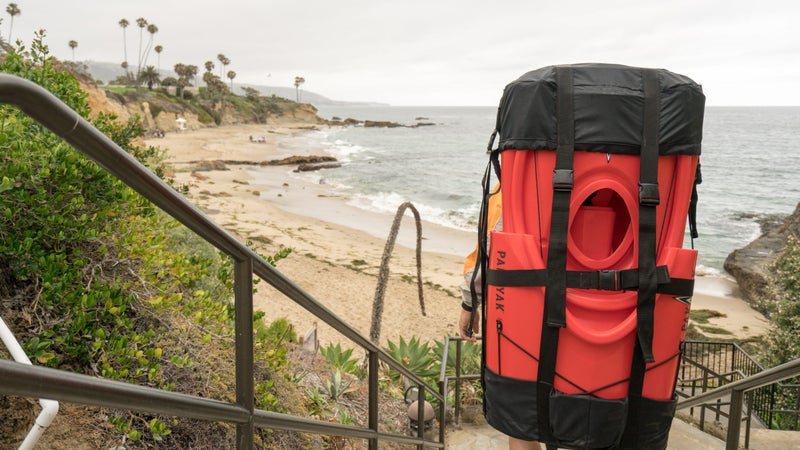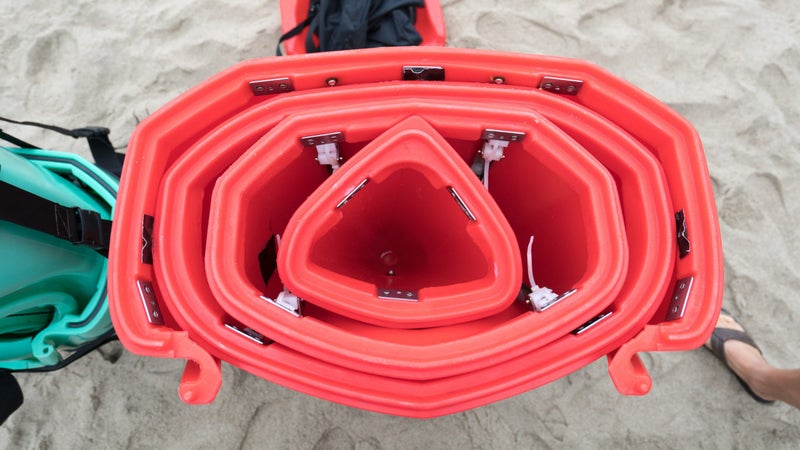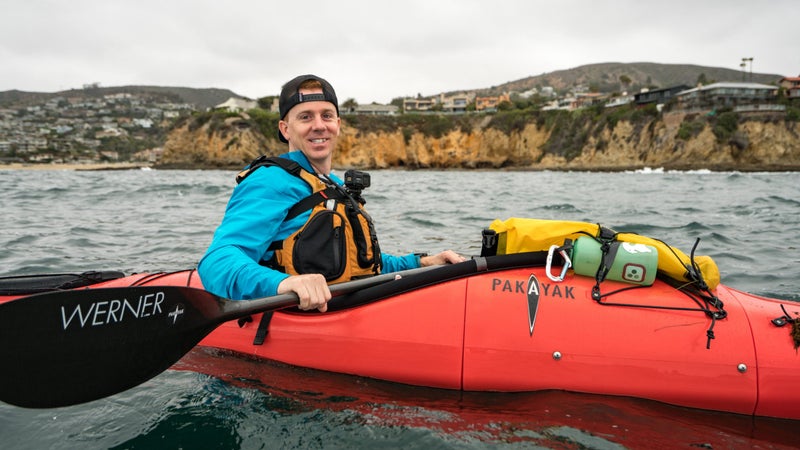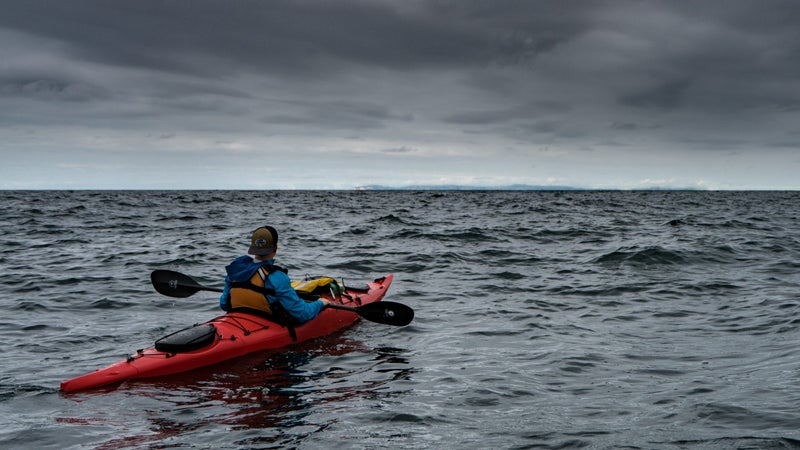This 14-foot sea kayak breaks down into parts that nest inside each other, resulting in a packed size no larger than a big suitcase. You can store it under your bed or in the trunk of your car. founder Doug Mackro and product designer Cort Peterson flew out to California to give IndefinitelyWild the first shot at paddling one of the new boats, which June 16.
What Is It?
Just about every hard-sided kayak is made through a process called rotomolding, which sculpts a single piece of plastic into whatever shape a manufacturer chooses. That same process is used here to create the six segments that nest inside one another, Russian Matryoshka doll set-style.
When fully assembled, this Pakayak Blue Fin 14 measures 14 feet long—a sweet spot that makes it less unwieldy than a 16-foot beginner kayak, but more stable than shorter models.
Packed down, the Blue Fin is about three-and-half feet tall, two feet wide, and 16 inches deep. With the included case, you can carry it on your back or haul it around like roller luggage via the built-in wheels.

Who’s It For?
Like other collapsible kayaks, the Pakayak is targeted at people who are short on space or limited in their transportation choices. In addition to storing more easily than a non-collapsible design, the Pakayak is also easier to move around, as you go from home to ocean, river, or lake. No longer do you need to lift a 50-pound kayak onto your car or try and move one through your home, yard, or garage. Really, this thing’s as easy to schlep as a suitcase.

Design
Using the tried-and-true process of rotomolding, the segments of the Blue Fin are quite durable. Each connects to its partner with a set of rubber-gasket tongue-and-groove seals and strong metal latches. The segments directly in front of and behind the passenger are completely closed, and have water-tight hatches for gear storage.
The prototype I tested (and that you see here), is fitted with development latches. The Pakayak team says the final production version will be more elegant and much lighter.
Foot rests and knee pads are molded into the cockpit. Your legs naturally bow outwards against the sides of the boat, and those knee pads were a welcome surprise.
This prototype was a little heavier than the production unit will be. By using lighter clamps and optimizing the molds, Mackro told me to expect the final weight to be about 50 pounds. That’s comparable to a similarly sized one-piece kayak.

Paddling It
Though I wasn’t able to set up the Pakayak myself (testing prototypes sometimes involves such restrictions), I watched as Mackro and Peterson went through the process. It looks very straightforward: you assemble the front and rear halves separately, then join those together and insert the seat. It only took them about 10 minutes.
Because the joints rely on rubber seals to prevent leaks, it's imperative to keep sand and other debris out during assembly. Because that's challenging on, you know, a beach, Pakayak plans to include a ground cloth with each kayak. But doing your assembly in a parking lot or on a picnic table may be the better option, if you can manage it.
Beach launches through surf are always a challenge. But the Pakayak made timing the docile waves of Diver’s Cove in SoCal’s Laguna Beach pretty easy. In fact, I had so much confidence just looking at this thing that I always expected it to work.
Paddling out through the rolling waves off-shore, I could feel a slight amount of flex in the boat. It took me sitting still and feeling for that flex in order to experience it, but it is there. Under way, though, you’ll never notice it.
At exactly two feet wide, the Blue Fin is plenty stable through wind-blown chop and the occasional rogue wave. It does not feel tippy, and I felt confident just sitting idle in it. As the morning fog started to clear and the south end of Catalina Island was illuminated by the sun, I was momentarily tempted to see if I could reach it by Pakayak. But then I remembered Chris Brinlee Jr’s experience, and with that was happy to stay less than a mile from shore.

Should You Buy It?
I’ve been paddling the 12-foot Oru Bay Kayak ($1,575) for the past year, and I appreciate its compact package and the resulting mobility. I like the idea of a collapsible boat. This new Pakayak Blue Fin ($1,695) is a fierce contender and will be an excellent choice for someone looking for a durable, packable, fully-capable kayak. The Oru weighs less than the Pakayak, but its origami design isn't as durable.
The Blue Fin I tested was very much a prototype. Pakayak needs to make its carrying case more comfortable to lug around and I’d like to see it develop a tandem design that packs into two cases, so the weight can be split between two people. If it does that, I know I’ll buy one. As it is now, if you want a boat that combines portability with durability, the Pakayak is right for you.


